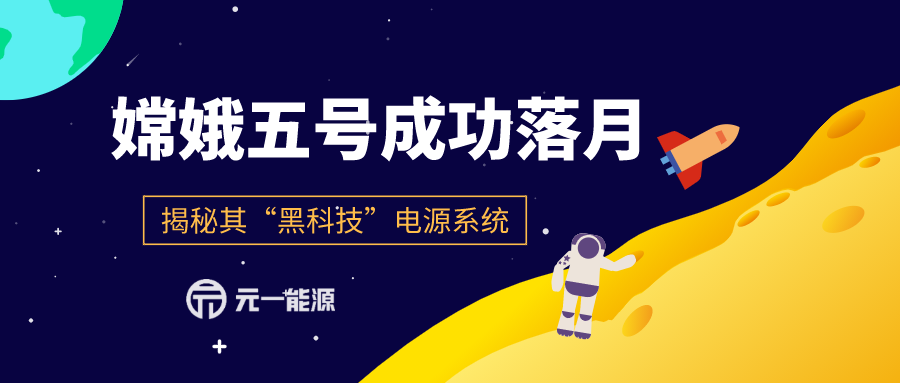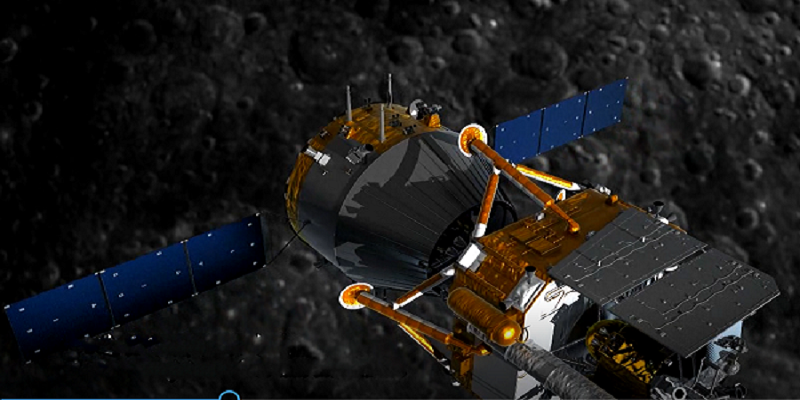A few days ago, the successful launch of the Chang’e-5 probe marked the beginning of my country’s first return journey from sampling of extraterrestrial objects. At about 23:00 on December 1, the Chang’e-5 probe successfully landed in the pre-selected landing area on the front of the moon, becoming my country’s third probe to successfully implement a lunar soft landing. After a successful landing, under ground control, the lander will officially start working on the lunar surface for about two days to collect lunar samples. At 4:53 on December 2, the Chang’e-5 lander and ascender assembly completed the lunar drilling sampling and packaging.

The mc4 connector used in Chang’e-5-Slocable
It is understood that Chang’e-5 is expected to achieve five “first in our country”, namely: sampling and packaging of extraterrestrial objects, takeoff of extraterrestrial objects, lunar orbital rendezvous and docking, carrying samples for high-speed earth reentry, sample storage, analysis and the study. Carrying such a heavy detection mission, the Chang’e-5 probe requires more energy than any previous lunar and deep space probes in China. How to ensure its power supply?
The Chang’e-5 probe is designed as a four-vehicle assembly, which is composed of four parts: lander, ascender, orbiter, and returner. It needs to complete the three objectives of “around, fall, and return” at one time. The power system is powered by the power supply. Controller, lithium-ion battery pack and solar cell array. In order to ensure this mission with the best performance, the power controller has the highest specific power in China and the international leader. The specific energy of lithium-ion battery for aerospace applications is the highest, and the solar cell array area ratio The power is the highest in the country, adapting to multiple states of multiple aircraft and multiple flight stages.
As the “brain” of the detector’s power supply system, in order to solve the problem of energy shortage and limited weight resources during the flight of the Chang’e-5 quadruple, the power controller has undergone an upgrade from PCU to PCDU. According to the director of Chang’e No. 5 power supply product designer, from PCU to PCDU, it is the upgrade from single function to multi-function. In the Chang’e-3 and Chang’e-4 missions, the power controller only includes the power regulation module, while the Chang’e-5 integrates several functions such as power regulation module, power distribution module, pyrotechnics control module, and intelligent interface unit. The first application of the lunar exploration project.
In order to increase the power generation of the solar cell array, the Chang’e-5 solar cell circuit is designed to maximize the patch area on the front of the solar cell array. However, during lunar exploration missions, the area of solar panels is severely restricted. At the same time, unlike ordinary satellites, the configuration of the probe itself determines the irregular shape of the panels. The solar panels of Chang’e-5 have triangles and polygons. And many other shapes. How to deal with the small substrate area and strange shape?

For general satellite models, developers only use single-size solar cells when designing solar cell circuits. For the Chang’e-5, the developers broke the conventional thinking and used batteries of various sizes to mix the cloth sheets, so that the cloth sheet efficiency reached more than 91%, which was 5% to 10% higher than conventional products.
At the same time, Chang’e-5 chose higher-efficiency solar cells. The photoelectric conversion efficiencies of Chang’e-3 and Chang’e-4 solar cells were 28.6% and 30.84%, respectively, while Chang’e-5 reached more than 31%. After hard work, the output power per unit area of the Chang’e-5 solar panel is not only at the time of product development, but even now, it is the highest level in China.
”Specific energy” is one of the important performance indicators of lithium-ion batteries. The higher the value, the more energy can be stored per unit volume or weight. According to the designer in charge of the Chang’e-5 lithium-ion battery, the developers have increased the battery weight “specific energy” of Chang’e-5 related products to 195Wh/kg (watt-hour per kilogram). This value is currently the highest value of the “specific energy” of lithium-ion batteries used in aerospace.
According to the working mode of Chang’e-5, after reaching the lunar orbit, the lander and ascender combination separates from the orbiter and returner combination, and the lander and ascender fall on the lunar surface to start collecting samples on the lunar surface. After taking full account of the mission time on the lunar surface and the working mode of the power supply products, according to the overall plan, the developers optimized the energy design of the lander and ascender assembly.

The power products of the lander include solar cell arrays and power controllers, and the power products of the ascender include solar cell arrays, power controllers and lithium-ion batteries. Before separation, during the flight phase and the lunar phase, the solar battery circuit of the lander assumed the responsibility of supplying power to the combined body; and when the combined body was separated in the lunar phase, the ascender quickly changed its role, and the solar battery circuit Power itself during the light period. In the non-illuminated period, the lander and ascender share a set of lithium-ion batteries, which provide power to the assembly.
In addition, Chang’e-5 was launched in the early morning, which is also related to battery capacity. The battery capacity of the spacecraft is limited. For Chang’e 5 to fly long distances in space, it must be illuminated by the sun. Choose to launch in the early morning, when Chang’e 5 flies to tens of thousands of kilometers, the battery can get a steady stream of solar energy through the maximum angle of illumination.
China’s lunar exploration project, after 10 years of deliberation, is finally divided into three stages: “around”, “falling” and “returning”: The first stage is “around”: launching the lunar exploration satellite “Chang’e-1″ and later The “Chang’e-2″ was used to probe the lunar surface environment, landforms, topography, geological structure and physical field; the second stage of “fall”: “Chang’e-3″ and “Chang’e-4″ were launched, with a soft landing Landing on the moon for detection; the third stage “return”: launch “Chang’e-5″, the goal is to patrol and sample the lunar surface.
The successful launch and moon landing of the Chang’e-5 probe is an important step in the third phase of “return.” The end of this period of project will bring my country’s aerospace technology to a new level.



 2020-12-08
2020-12-08

















